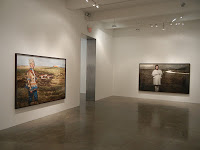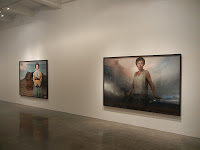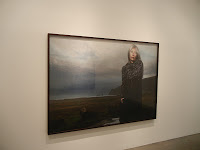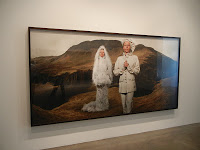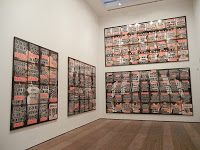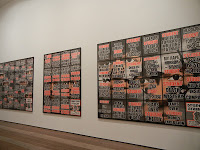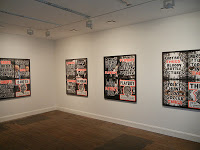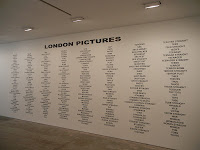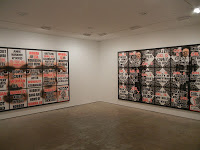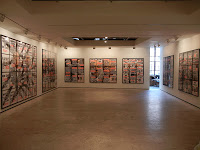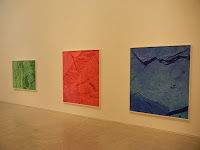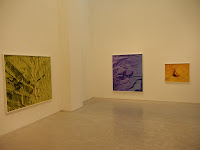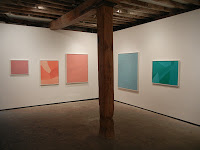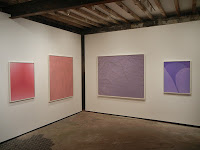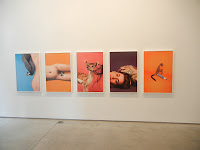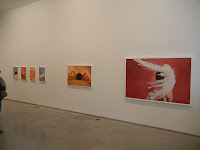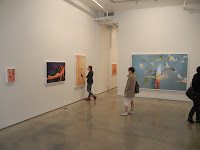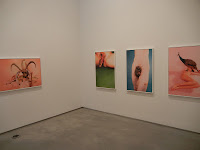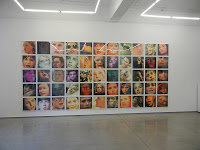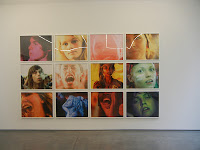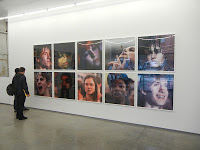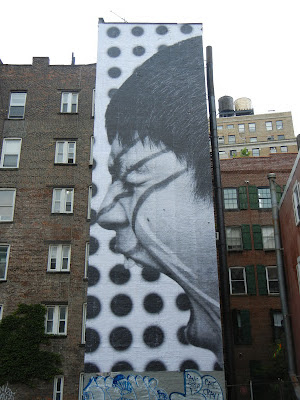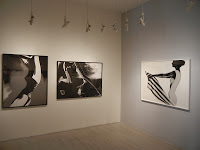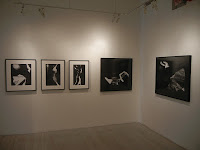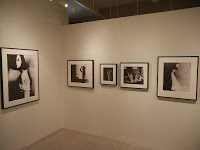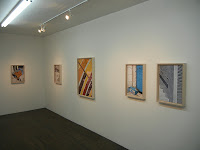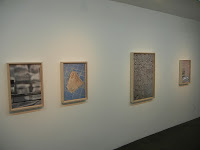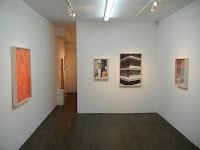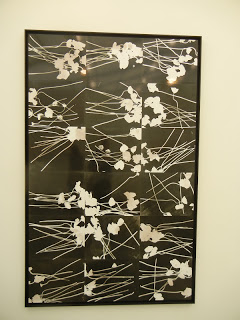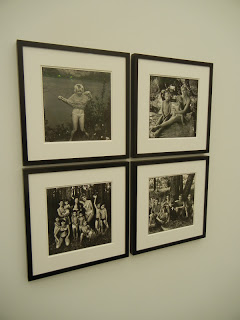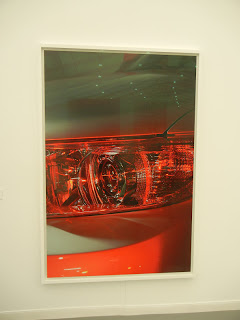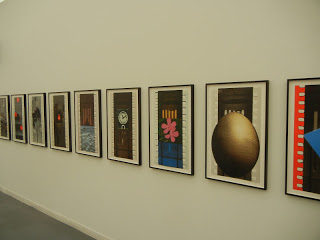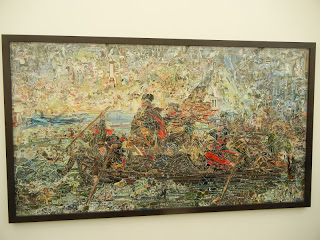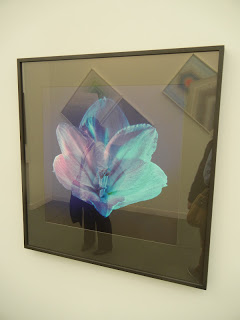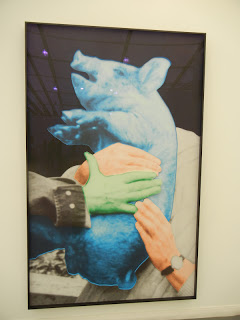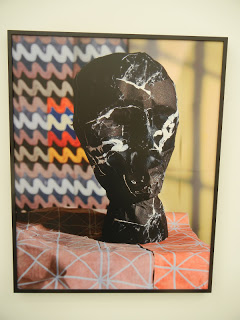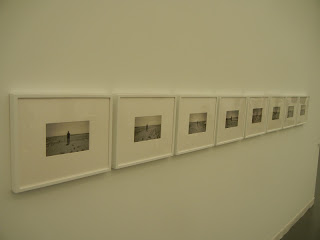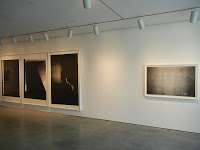 JTF (just the facts): A total of 10 large scale black and white photographs and 1 video projection, framed in white and unmatted, and hung in the main gallery space and the entry area. All of the prints are pigment prints, most on rice paper. 3 of the 89×60 works are unique, while 1 is available in an edition of 3+2AP. The other 6 photographs are 55×36 (or reverse), in editions of 3+2AP. All of the photographs are dated 2012. The digital video is 65 minutes long, in an edition of 5+2AP. (Installation shots at right.)
JTF (just the facts): A total of 10 large scale black and white photographs and 1 video projection, framed in white and unmatted, and hung in the main gallery space and the entry area. All of the prints are pigment prints, most on rice paper. 3 of the 89×60 works are unique, while 1 is available in an edition of 3+2AP. The other 6 photographs are 55×36 (or reverse), in editions of 3+2AP. All of the photographs are dated 2012. The digital video is 65 minutes long, in an edition of 5+2AP. (Installation shots at right.) Three large black prints dominate this show, the multiple layers of printing making them nearly abstract. While a shadowy form emerges from one and white stripes slip along the sides of the other two, the lush surface texture of the prints is what is unusual; the content has become illegible, allowing the process to become the subject.The rest of the photographs inhabit a dirty middle grey, where the shoulders and fingers of young men are covered with grime, and graffiti (or its muted, painted over absence) lingers nearby. Two images of the massive body of New York Knicks center Tyson Chandler are the most striking of this group, his muscled shoulders and narrow waist creating an exaggerated triangular form when seen from behind. In the second image, Chandler rears back pulling up his black t-shirt to show a paragraph of inspirational text tattooed along his right side. Both photographs are powerfully sculptural, while still retaining Marcopolous’ smudged underground realism.
Three large black prints dominate this show, the multiple layers of printing making them nearly abstract. While a shadowy form emerges from one and white stripes slip along the sides of the other two, the lush surface texture of the prints is what is unusual; the content has become illegible, allowing the process to become the subject.The rest of the photographs inhabit a dirty middle grey, where the shoulders and fingers of young men are covered with grime, and graffiti (or its muted, painted over absence) lingers nearby. Two images of the massive body of New York Knicks center Tyson Chandler are the most striking of this group, his muscled shoulders and narrow waist creating an exaggerated triangular form when seen from behind. In the second image, Chandler rears back pulling up his black t-shirt to show a paragraph of inspirational text tattooed along his right side. Both photographs are powerfully sculptural, while still retaining Marcopolous’ smudged underground realism.
While not every one of these images resonated with me, I was most interested by the recurring idea of an alternate photographic aesthetic, where traditional crispness and clarity have been traded for something purposefully rougher and less controlled. Marcopolous’ photocopy look reminded me of Moriyama and the Provoke era Japanese photographers, as applied to facets of contemporary American subculture. His visual approach matches his chosen subject matter well, capturing its truths and spirit without cleaning them up.
 Collector’s POV: The prints in this show are priced as follows. The unique 89×60 prints are $18000 each. The editioned 89×60 print of Tyson Chandler is $15000. The smaller 55×36 prints are $8500 each. Marcopolous’ work has not yet become consistently available in the secondary markets, so gallery retail is likely the only option for interested collectors at this point.
Collector’s POV: The prints in this show are priced as follows. The unique 89×60 prints are $18000 each. The editioned 89×60 print of Tyson Chandler is $15000. The smaller 55×36 prints are $8500 each. Marcopolous’ work has not yet become consistently available in the secondary markets, so gallery retail is likely the only option for interested collectors at this point.- Artist site (here)
- Features: Wall Street Journal (here), New York (here), Tyson Chandler’s blog (here)
- Exhibit: 2010 Whitney Biennial (here)
Ari Marcopolous: Wherever You Go
Through June 16th
Marlborough Chelsea
545 West 25th Street
New York, NY 10001
